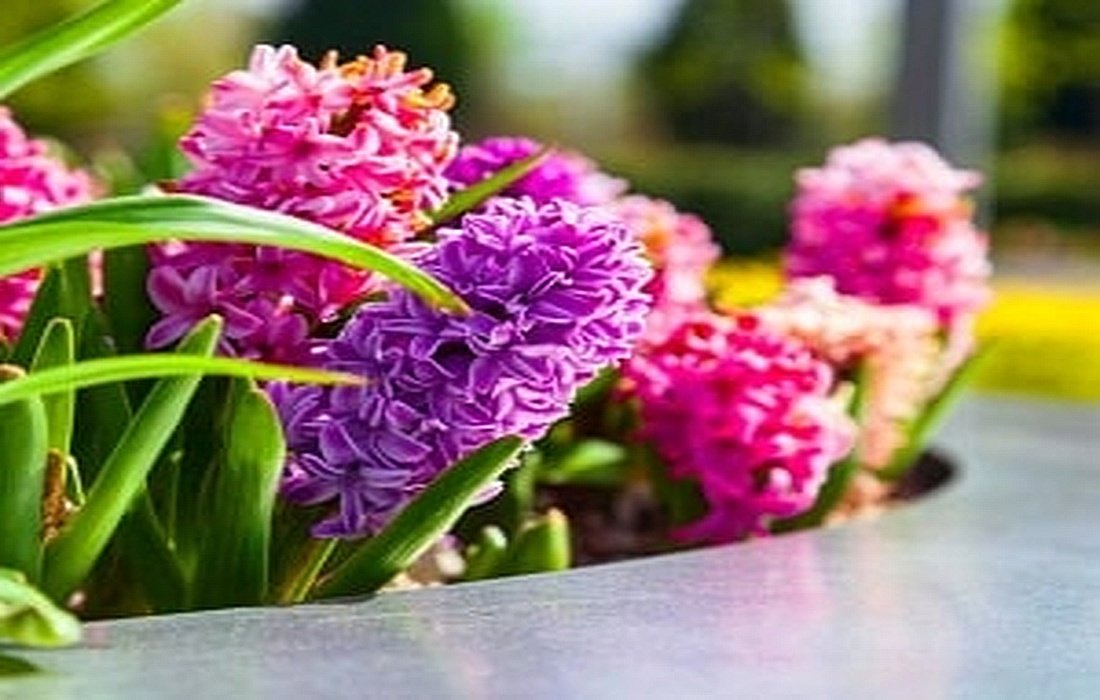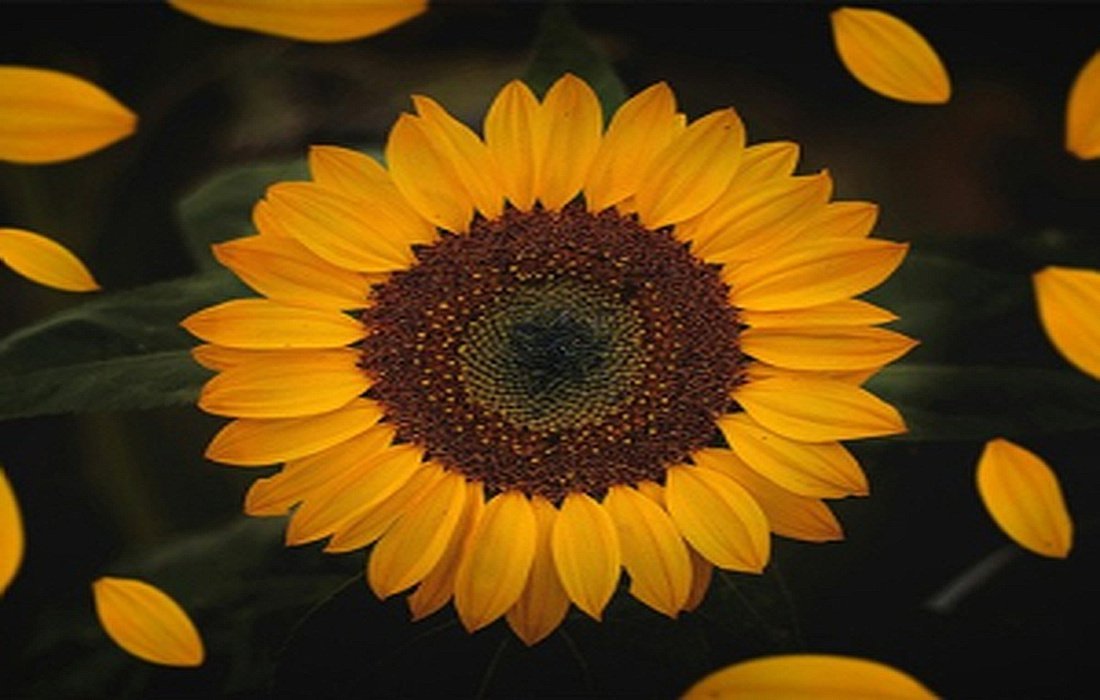Guide to Planting, Growing, and Caring forHyacinth
The hyacinth is one of the most beautiful flowers that many Iranians place on their Haft-Seen table. This fragrant flower comes in various colors and sizes and can be grown in an apartment. If you want to learn how to cultivate and care for this beautiful flower, please read this section ofSelMagz.
Introduction and Botany of Hyacinth
The hyacinth plant belongs to the lily family and is native to Southwestern Asia, Southern and Central Turkey, Northwestern Syria, and Lebanon. It was introduced to Europe in the 16th century. This herbaceous plant has a height of 15 to 20 centimeters and produces bell-shaped flowers in clusters. Hyacinth flowers come in various colors such as white, red, blue, purple, pink, and yellow, typically blooming from mid-February to March. It is also called Dutch hyacinth as about 95% of the world’s hyacinth supply is produced in the Netherlands.bulbHyacinths are typically grown in large groups due to their strong fragrance. They also mix well with other spring bulbs. Most varieties of hyacinth bulbs are relatively large. For spring garden blooms, plant hyacinth bulbs six to eight weeks before the first frost in autumn, with the root side down at a depth of about 4 to 6 inches and spaced 3 to 6 inches apart. Give them some space to spread out, then cover with soil and water thoroughly.
The taller types may break easily, so if you have only a few, you can plant them close to each other in the ground for support.
Types of Hyacinth
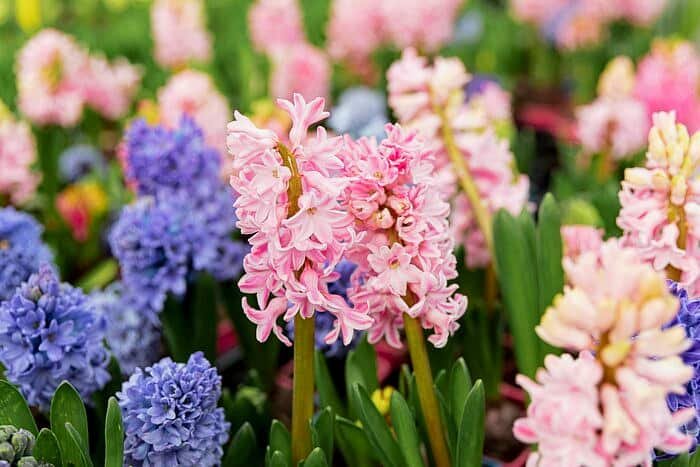
Hyacinth plants are generally divided into three categories:
Dutch Hyacinth H. Orientalis.
Dutch hyacinths have two types: single and double. The single-flowered cluster is stronger, while the double-flowered cluster is smaller and has finer flower grains. In Dutch hyacinths, the flower grains stick closely together on the cluster.
Native or Parisian Hyacinth H. O. Pronncialis.
Native hyacinth, or Iranian hyacinth, is often planted for
Nowruzand its bulbs are sourced fromMazandaran
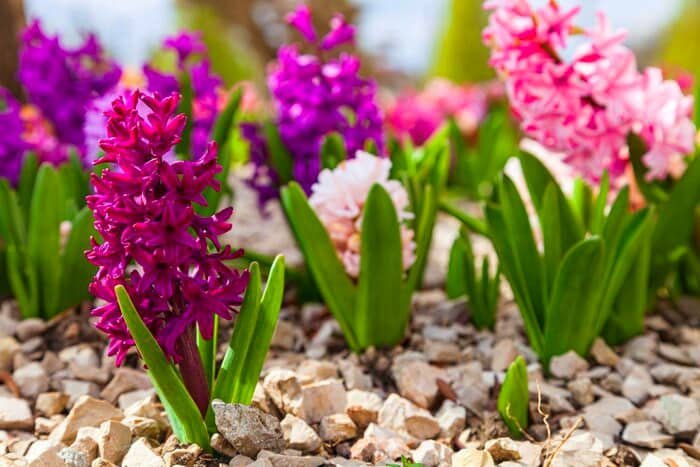
Roman Hyacinth H. O. Olbulus.
This type of hyacinth is very small and sparse but highly fragrant. Its flower cluster typically has one flower per plant and its flowers are white, blooming earlier than Dutch hyacinths.
Aquatic Hyacinth
Aquatic hyacinth is one of the fastest-growing plants, with dark purple-black roots and an upright stem bearing 8 to 15 attractive flowers.
This plant grows vigorously in tropical areas on stagnant waters and can completely cover lakes and ponds. When cultivated in a controlled manner, it can help clean and provide oxygen in human-made ponds.
Aquatic Hyacinth
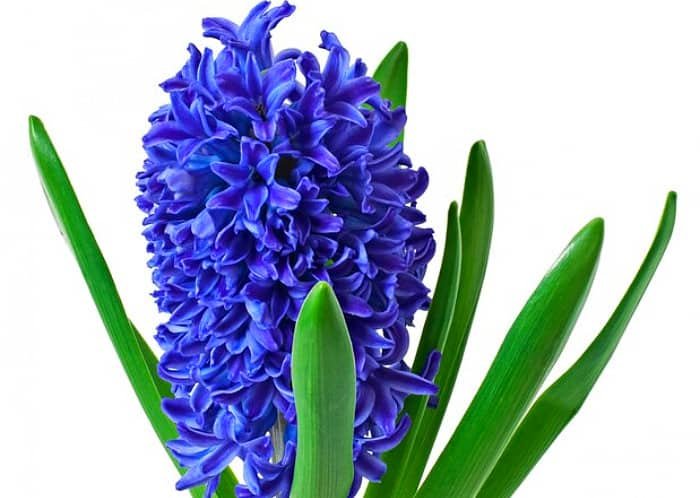
Conditions for Keeping Aquatic Hyacinth
In yards with ponds, you can keep aquatic hyacinth alongside other aquatic plants to create a beautiful combination.
Aquatic hyacinth often blooms throughout the summer, but the flowers last only about a day.
Adequate airflow and moderate light are suitable for this plant.
Nighttime temperatures should not be much higher than daytime temperatures.
The stem of aquatic hyacinth, after drying, can be processed into fibers and woven into strips for making bags, shoes, flower crowns, hats, pots, and decorative materials.
This plant is highly effective for use in energy and gas production tanks via biomass (biogas) methods.
Necessary Conditions for Planting and Growing Hyacinth
If you want to grow these beautiful flowers at home, you must know the necessary conditions for hyacinths, which include:
Light
Plant hyacinth bulbs in a location with full sunlight or partial shade. Like all spring bulbs, hyacinths will sprout, bloom, and start to weaken before their leaves fully drop, so you don’t need to worry about excessive shade from nearby trees. This plant needs at least six to eight hours of sunlight daily.Sunlightis essential.

Soil
The soil for hyacinth bulbs should be loose and well-drained for optimum growth. They do not tolerate wet soil. Rich soil can lead to floppy stems, so use organic materials sparingly when preparing or amending the soil. The best soil for hyacinths includes coco peat and peat moss, or a mixture of compost, leaf mold, sand, and garden soil. You can also plant hyacinth bulbs directly in the garden, and they will grow and bloom according to the outdoor climate.
Water
After planting the bulbs, water the soil well. If there is no regular rainfall, continue watering until winter, allowing the soil to dry out between waterings. If the bulbs sit in cool, moist soil, they will eventually rot. Check the soil with your finger and water only when it is completely dry. Generally, watering once or twice a week will depend on the weather, requiring about 1/2 inch of water weekly from rainfall and irrigation combined. However, this depends on the drainage capacity of the soil. These plants are native to the Eastern Mediterranean. When determining the quantity and frequency of watering, consider the relative dryness of the area. Overwatering can lead to bulb rot.

Temperature and Humidity
Hyacinths are expected to survive winter. They may require winter protection in colder areas and some pre-cooling in warmer areas depending on the variety. In areas where winter temperatures remain above 60°F, remove the bulbs, and freeze them for 6 to 10 weeks in a dark, cold place before replanting.
Fertilizer
The easiest way to feed new bulbs is to add some fertilizer to the planting hole at the time of planting. There are many fertilizers available for bulbs; if possible, add some (10 percent) animal or worm compost to the soil at planting or use regular bone meal. Fertilize the bulbs well with watering again in spring when new growth first appears.
Pruning
After the flowering of the bulbs ends, cut the flower stems, but leave the leaves so that the plants have time to store energy in their bulbs for the next season.
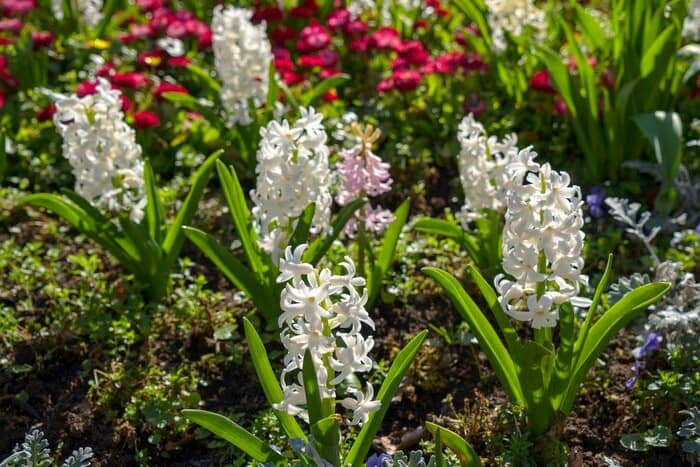
Maintenance
Hyacinth is not a perennial flower, and its bloom lasts no more than a month. However, after the flowers die, you can remove the bulbs from the soil and cut the stems, leaving them in a dry, dark place to plant again next year.
Tips for Planting Hyacinth Outdoors
If you want to plant hyacinth in the garden, you should plant the bulbs in early autumn, giving the plant enough time to grow and establish roots before winter.
To successfully cultivate hyacinth, use rich, moist soil with good drainage and plant the bulbs in a spot that gets full sun to the north and shade to the south. To enrich the soil, mix in some organic compost well, and plant the bulbs at a depth of about 24 centimeters with a spacing of 6 to 9 centimeters.
Methods of Hyacinth Propagation
Hyacinth can be propagated in the following ways:
By Seed
Hyacinth seeds are papery and take 4 to 6 years to bloom. Hyacinths naturally produce few offsets, and their offsets are annual, with flowers of less quality in the second year. Using two methods: basal cuttings and basal trimming for producing more offsets is common.
By Basal Trimming
In this method, the curved knife is used to horizontally remove the base plate of the bulb, producing many offsets at the cut areas that can be planted. This method requires a lot of skill.
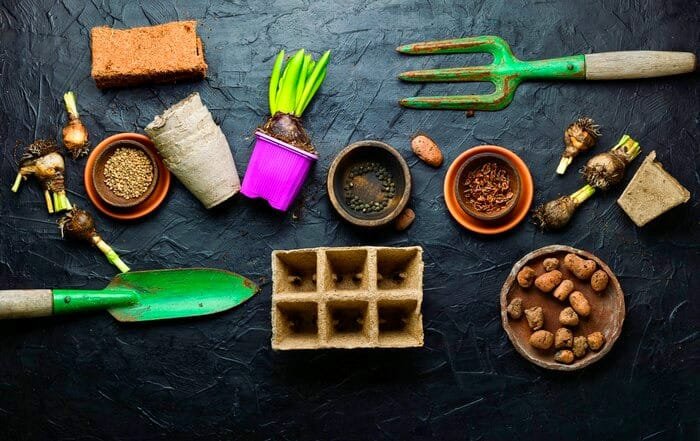
By Basal Cutting
In this method, cuts are made on the bulb’s base plate to produce more offsets. To nourish the bulb after harvesting the flowers, the leaves should be left on the plant. The offsets are removed in July and August when flowering has finished. For early blooming, treatment methods such as temperature treatment can be used after pulling the offsets from the soil (in summer).
Asexual Propagation
Asexual propagation is also the only effective way to extend the life of your hyacinths, as these bulbs gradually decline over time. While an individual bulb may continue to bloom for years, the size of blooms and bulbs gradually diminishes. By separating the offsets every few years, you can effectively keep your hyacinths alive indefinitely.
Guide to Asexual Propagation of Hyacinth
Here’s how to propagate hyacinths by separating the bulbs:
After the flowers fade and before the leaves start tobrownout, usually in late summer or autumn, dig out the mature hyacinths. Be sure to wear gloves when handling hyacinths, as the bulbs contain toxins that can irritate skin.
Wash the soil off and separate the clusters with the bulbs.
Immediately plant the bulbs in well-drained soil. If the soil is compact, mixing in sand or compost is a good idea. Adding a handful of bone meal or bulb fertilizer when planting is also recommended. Don’t be surprised if it takes a few years for the offsets to produce good flowers.
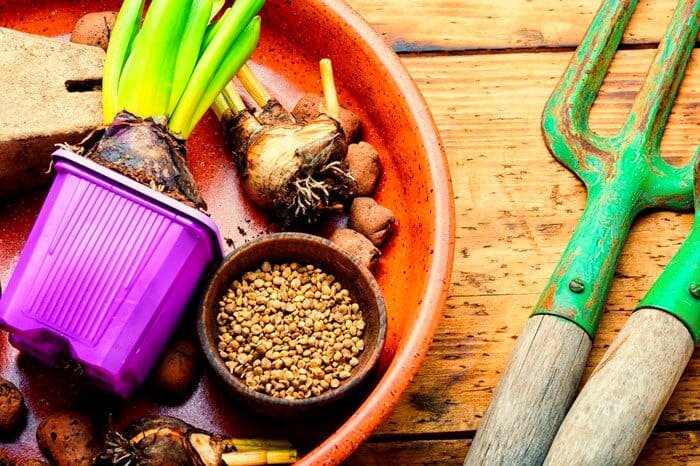
Potting and Replanting Hyacinths
Good drainage in pots can be achieved using plastic or clay. The pot size depends on the number of bulbs you plant, although hyacinth bulbs can be planted close together because they do not require much spacing for reproduction. You can also press them so they almost touch but still leave some space for soil to retain moisture.
Commercial potting mix is suitable for planting hyacinths in pots, though some people prefer to mix a little sand with the potting soil. Keep the potting environment moist until the bulbs sprout, then water whenever the soil dries out. Once the bulbs sprout, place them in indirect sunlight. Cooler temperatures help keep the blooms longer.
Winter Care for Hyacinth
In areas with cold winters, applying a thick layer of mulch over the bulb bed may allow the hyacinth bulbs to survive harsh winters. In regions where winters are mild, no winter protection is needed, and if you have hyacinths in a place where winter temperatures stay above 60°F, you should remove the bulbs and artificially cool them before replanting. Alternatively, you could forego growing annual hyacinths and replant them every autumn.
How to Bloom Hyacinth?
Hyacinth bulbs naturally bloom easily in spring. As mentioned, you can cut the flower stems when they wither and the leaves turn yellow. When they bloom, feed them again in late July to early September to support them for the coming spring. However, note that most gardeners find it necessary to replant hyacinths every two or three years or divide them.
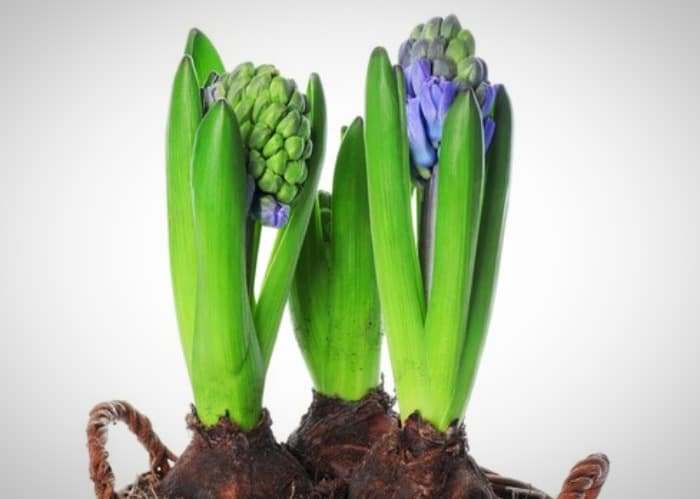
Common Problems, Pests, and Diseases of Hyacinth
Like any other flower or plant, hyacinths can get pests and diseases, each with its own solutions, which will be discussed next.
Rodents
Various rodents eat hyacinth bulbs. You can partially protect them by adding a handful of sand in the planting hole, or you can use commercial pesticides. An easier method is to plant them alongside daffodils that rodents tend to avoid.
Only a few diseases affect hyacinths, but if planted in dense soil with poor drainage, the bulbs may rot.
Spotted Foliage
If you’ve had late frost after the foliage appears, hyacinth leaves can develop unsightly spots. Unfortunately, there’s not much you can do about it, but it usually doesn’t affect the stems of flowers that appear later.
Broken and Streaked Petals
This may be caused by mosaic virus, which can also cause leaf spotting. Infected plants should be removed and discarded. Sterilize any tools used for this as they can spread disease.
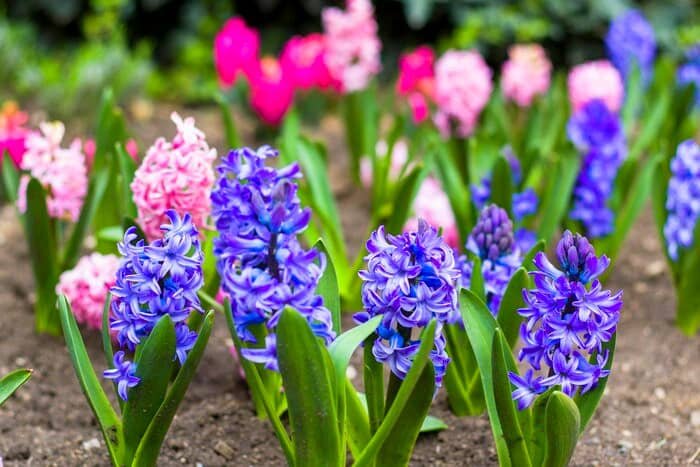
Small Flowers
It is natural for hyacinths to flower less after the blooming season. You can increase their lifespan with regular feeding. Propagating new plants by dividing mature hyacinths can keep you supplied with flowering plants for almost an unlimited time.
What is the lifespan of hyacinths?
Unfortunately, hyacinth bulbs have a short lifespan, likely only lasting three to four years. Many people consider them annuals and therefore replace them each year.
Can hyacinth be grown indoors?
If you plant hyacinth in pots to make them bloom earlier, you must either buy pre-frozen bulbs or freeze them yourself in the refrigerator or another cold place, then place them in sand until they bloom. After blooming, indoor hyacinth bulbs are usually discarded; however, if you have pets that dig up the bulbs, they are not a good choice for indoor planting.



